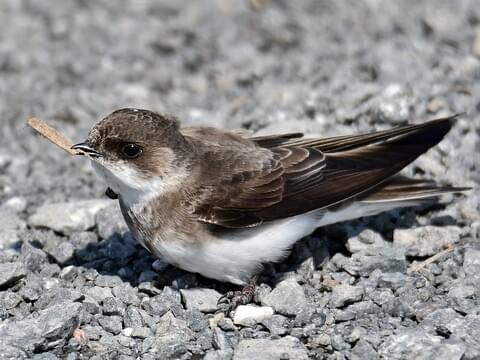
The Sand Martin, also known as the Bank Swallow in the United States, is a graceful and agile member of the swallow family. These migratory birds are distinguished by their elegant flight patterns and their preference for nesting in vertical eroded sand banks along waterways.
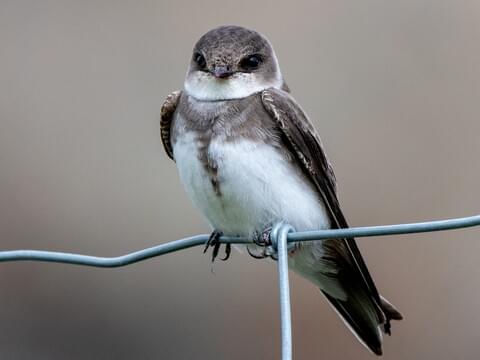
Sand Martins are relatively small members of the Swallow family, characterized by their dark brown upperparts and pale whitish throat and belly. One of their most notable features is a distinctive brown band across their chest, which may extend as a narrow streak down to their belly.
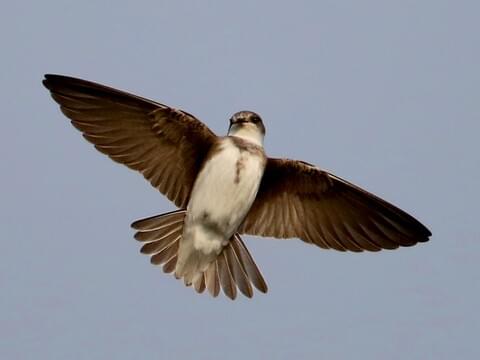
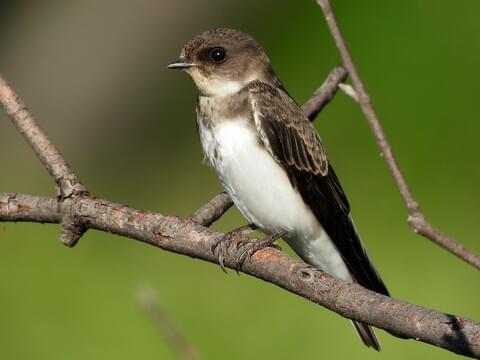

Sand Martins, being the smallest members of the Swallow family in both the United Kingdom and the United States, possess a total body length of approximately 12 centimeters (4 ¾ inches). They weigh between 10 to 18 grams (⅓ – ⅔ ounces), with females slightly heavier on average. Their agile flight is supported by a wingspan of 26 to 29 centimeters (9 – 11 inches).

Male Sand Martins employ a rapid twittering song during the breeding season to advertise their nest sites and court potential mates. Females may also sing during aggressive encounters and while forming pairs. Additionally, they emit a distinct harsh, two-noted contact call, along with other simple vocalizations to convey alarm or excitement.

These birds feed primarily on small flying insects, typically caught mid-air during flight. Their agile flying skills enable them to catch their prey, including various types of insects.
Sand Martin chicks are fed by both parents, who collaborate to feed their offspring over thirty times every hour. To facilitate efficient feeding, adults compress multiple insects into a single bolus and deliver it directly into the chick’s mouth.
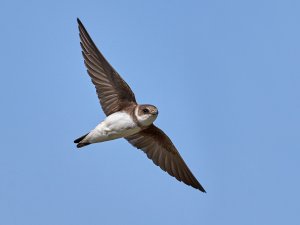
While Sand Martins are often associated with freshwater environments along streams and lakes due to their nesting requirements, they have adapted to using artificial walls created by human activities like quarrying and road construction, expanding their habitat range.
During the nesting season, Sand Martins predominantly remain near the breeding colony, foraging over open habitats such as water bodies, wetlands, grasslands, pasture, and farmland. They tend to avoid densely wooded and mountainous areas.
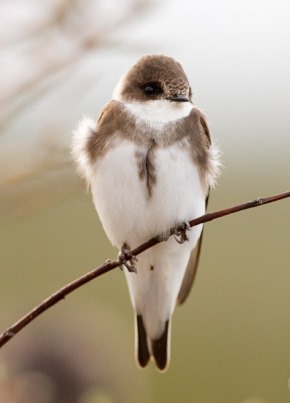
Sand Martins boast a global distribution, inhabiting five out of the world’s seven continents. Breeding occurs across the United Kingdom, Europe, North America, and temperate Asia in the summer. In the non-breeding season, they extend their presence to parts of South America, Africa, and limited areas of Southeast Asia.
Highly proficient in the air, Sand Martins spend more than half of their day flying over water bodies and surrounding regions, hunting for flying insects. Their flight altitude typically ranges around 15 meters (50 ft) above the water or ground, depending on weather conditions and prey availability.
